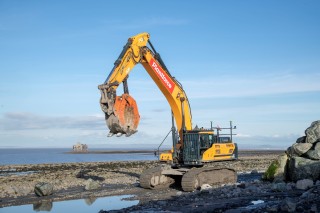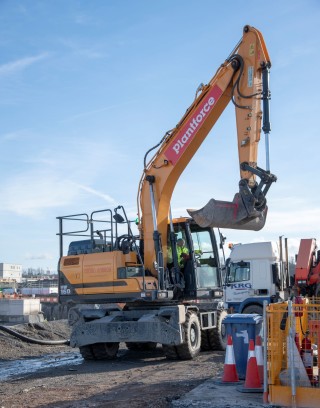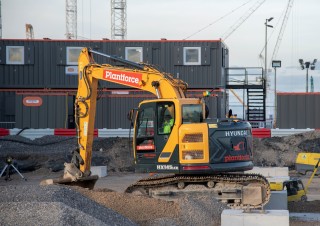Situated on the North Somerset coast, the new nuclear power station will provide electricity for around six million homes if and when it is completed – it has to be said that the prospects do look a little mixed, given the difficulties that developers are currently having with delays on other plants under construction around the world.
The joint developers of the £22bn Hinkley Point C are China General Nuclear Power Group (CGN) and EDF Energy, state owned French and Chinese corporations respectively, backed by billions of pounds of subsidy from UK taxpayers.
Bylor, a Bouygues/Laing O’Rourke joint venture, has the £2.8bn main contract for the two reactor buildings and main civil engineering works.
Balfour Beatty has three major package of works: a £200m contract to construct 9.5km of tunnels; a £460m electrical works package in JV with NG Bailey; and a £214m overhead line project to connect the new power station to the national electricity network
Plantforce Rentals is currently carrying out the majority of the earthworks on the Hinkley Point C site and is the leading plant supplier on site.
Plantforce Rentals, which has its headquarters in Somerset, has been on site since 2015 and just about doubled its presence in January 2019 after the collapse into administration of Hawk in Janaury 2019. Plantforce took over Hawk’s equipment, contracts and personnel at Hinkley Point C, ebsuring continuity of service.
One of the larger items on the Plantforce stock list at Hinkley is a brand-new 52-tonne Hyundai HX520LC – pictured above . The machine is fitted with a huge Geith fixed-leg rock grab. With the earthworks almost at an end, one of the tasks set for the mammoth Hyundai was completing a section of rock armour installation.
Plantforce marketing manager Dale Hawkins says: “The rock armour defence has been installed while the primary 13.5-metre sea wall, built to protect the operational station, is under construction. The 52-tonne HX520LC is able to handle the granite boulders effortlessly. One of the main reasons we invested in the HX520 was for its immense power.”

Thanks to the decent road conditions on the Hinkley site and the fact that much of the work is now undertaken on good ground, Plantforce has also supplied a number of Hyundai wheeled excavators to the project.
The company runs a number of 14-17 tonne models with the latest addition being an HW160 complete with tipping trailer, FHOSS Halo lighting system, night branding, an Engcon tiltrotator, Prolec height & slew restriction and SiteZone proximity device.
“We are always looking for cost-effective solutions for different markets,” Dale Hawkins says. “We have specified this particular machine to show the Hinkley Point C contractors what we are capable of and what we can do to make operating an excavator even safer. They have been particularly impressed with the result and this has spurred us on as a company to look for other ways of adding additional value to a piece of equipment.”
The larger machines are equipped with GPS machine control systems. Early days on the project saw a more conventional approach to setting out but the decision was made to take the whole site digital. “We could all see the benefit of removing operatives from the working area straight away,” he says.
Hinkley Point C has bought into GPS machine control in a big way – working alongside Plantforce, Leica Geosystems and Optical Survey Hire, they have created their very own information superhighway by connecting all the machines and using the full available spectrum of machine control and engineering workflows, he says.
“This means that from any point on the site an operator can dial his or her machine into the system and commence work without the need for an engineer to come and set up profile boards. The project still has a number of engineers who will regularly double-check the works, but the installation of the system has been a massive success and has significantly reduced the amount of over dig resulting in the management of less material,” he says.
“We have also assisted in a huge amount of GPS training for the operators on-site and this is then reflected in their opportunities for the future.”




